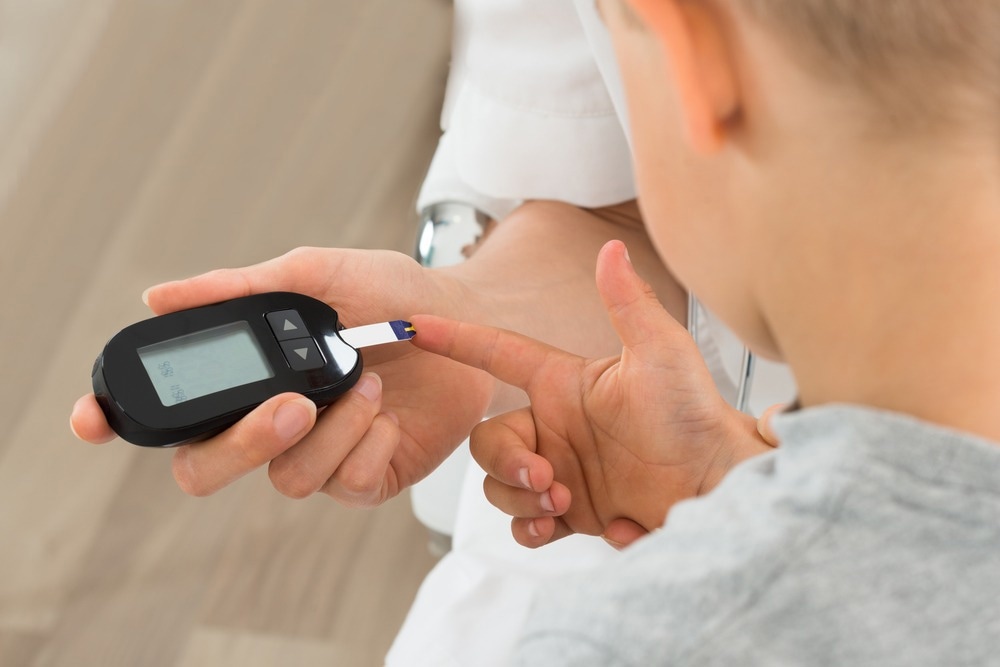The onset of type 2 diabetes (T2D) among the youth is rising globally. In fact, a 5% increase in its incidence was reported by the SEARCH for Diabetes in Youth Study from 2002 to 2012 in the United States, while its incidence nearly doubled between 2001 and 2017.
The Treatment Options for T2D in Youth (TODAY) study has shown that such an increase can lead to rapid β-cell failure, along with the early onset of numerous complications in approximately half of the youth with T2D in the U.S.
Study: The COVID-19 pandemic is associated with a substantial rise in frequency and severity of presentation of youth-onset T2D. Image Credit: Andrey_Popov / Shutterstock.com
Background
A recent study conducted by the U.S. Centers for Disease Control and Prevention (CDC) indicated an increase in the onset of diabetes among youth after recovering from the coronavirus disease 2019 (COVID-19); however, it did not differentiate the type of diabetes. An increase in T2D has also been observed since the onset of the pandemic, irrespective of associated COVID-19.
Several studies during the early stages of the pandemic in the U.S. and Europe have highlighted the increase in type 1 diabetes (T1D) among those with diabetic ketoacidosis (DKA). However, the impact of the pandemic on the overall incidence of T1D remains unknown.
Although several institutions in the U.S. have reported an increase in the rate and severity of T2D among the youth during the pandemic, multicenter or population-based data have yet to be published.
A new The Journal of Pediatrics study assesses the impact of the COVID-19 pandemic on the onset of T2D among the youth during the first year of the COVID-19 pandemic as compared to the previous two years.
About the study
The current study included patients who were aged 21 years or younger and diagnosed with T2D from 24 U.S. diabetes centers. The T2D diagnosis was completed according to the American Diabetes Association (ADA) guidelines.
Data on ethnicity, sex, diabetes-related clinical outcomes, age at diagnosis, initial random blood sugar at diagnosis, hemoglobin A1c (HbA1c) levels, body mass index (BMI), and type of insurance were collected from all patients. For patients with metabolic decompensation in the form of DKA, hyperosmolar hyperglycemic syndrome (HHS), or mixed DKA/HHS, information on serum osmolality, initial pH, and bicarbonate was collected.
DKA was defined in terms of pH or bicarbonate. Moreover, DKA was categorized as mild when the pH was between 7.2 -7.29 and/or bicarbonate was between 11-15 mmol/L.
Moderate DKA was defined as pH between 7.1-7.19 and/or bicarbonate within the range of 6-10 mmol/L. Severe DKA was documented when the pH was less than 7.1 and/or bicarbonate levels were less than five mmol/L.
HHS was documented when the serum osmolality was equal to or greater than 330 mOsm/kg, and serum glucose was greater than 600mg/dL.
The primary outcome was to determine the number of new T2D cases diagnosed in the first year of the pandemic as compared to the previous two years. The secondary outcome was defined as the percentage of these patients who reported metabolic decompensation as compared to the previous two years.
Study findings
A total of 3,113 patients were included in the study. The average number of new T2D diagnoses during the first year of the pandemic was 1,463, which was comparable to 825 during the two pre-pandemic years (PPY).
An increase in diagnoses among Black youth and a reduction among White youth was observed during the initial year of the pandemic. Moreover, a reversal in the proportion of female and male diagnoses was observed. Most diagnoses were reported in patients who had public insurance.
BMI was higher during the pandemic year as compared to PPY18-19 and PPY19-20. Additionally, higher HbA1c and blood glucose levels were reported among patients during the pandemic year as compared to the previous years.
Most of the patients diagnosed during the pandemic years were managed as inpatients, which was comparable to most patients who were managed as outpatients in the previous two years.
Taken together, 21% of youth diagnosed with T2D reported metabolic decompensation during the first year of the pandemic as compared to 9.4% and 9.0% in PPY18-19 and PPY19-20, respectively. Negative binomial series models also showed that the onset of the pandemic significantly impacted the number of T2D diagnoses, as well as the number of patients with metabolic decompensation.
Conclusions
The current study confirms that the COVID-19 pandemic had a significant impact on the occurrence of T2D among youths. The increased incidence of T2D during the pandemic increased the burden on general practitioners, pediatric endocrinologists, as well as obesity providers who had to manage this population with limited resources.
Additionally, families with high rates of unemployment, as well as food and housing insecurities, were disproportionately affected. This rapid rise in the number of T2D youth patients is alarming, as it can cause several complications early in life. Further research is needed to monitor this ongoing trend of increased rates and severity of T2D, as well as identify possible causes and outcomes.
Limitations
The two most common limitations of this study include missing information and inconsistency of the reported data. It is also difficult to derive incidence data due to the lack of a suitable denominator.
- Magge, S. N., Wolf, R. M., Pyle, L., et al. (2022). The COVID-19 pandemic is associated with a substantial rise in frequency and severity of presentation of youth-onset T2D. The Journal of Pediatrics. doi:10.1016/j.jpeds.2022.08.010.
